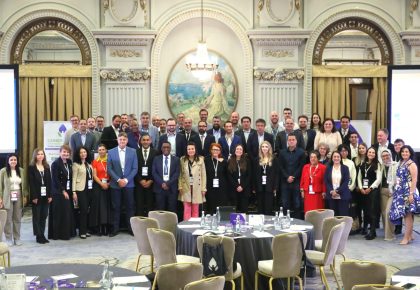
Setting Limits on Concrete’s Carbon Footprint – US Case Study will be brought to CarbonZero 2025 by Tien Peng, Co-founder at Green Plum Street USA
The EU’s Carbon Border Adjustment Mechanism (CBAM) policy increases risks related to competitiveness in the European market. Several US authorities have implemented similar mechanisms called Buy Clean policies with different scopes, regulatory frameworks, and incentives for implementation. These policies measure the reduction of global warming potential of cement and concrete, and require agencies to implement a “limit” to the carbon dioxide emissions of industrial materials.

This Case Study examines the State of Maryland methodology for establishing emission limits and quantifies the reductions against the industry benchmarks. The Buy Clean mandate impacts a diverse group of stakeholders, not just those who manufacture concrete. Manufacturers, architects and engineers must become aware of the limitations of the reporting tools to ensure the mandatory building requirements are still met. A clear understanding of how the policy is implemented offers insights to how the industry value chain can meet functional performance goals while maximizing the chances of successful carbon reduction of the built environment.
Among other speakers:
- Grant Quasha – Chairman and CEO, Eco Material Technologies
- Ebru Sipahioğlu– Chief Technical Officer, Limak Cement
- Frédéric AUBET – Managing Director, Romcim SA, A CRH Company
- Maged Mostafa – COO, Arabian Cement Company
- Mahendra Singhi – Member of the Board of Directors and Strategic Advisor, Dalmia Cement (Bharat), Board member GCCA
- Mohammed Fouad – Business Excellence Director, Riyad Cement Saudi Arabia
- Chris Davies – exDirector of CCS Europe
- Alexandru Ciocan – Senior Researcher / Energy Policy Adviser, Energy Policy Group
- Vlad Stoicescu – President, Romanian Association for Sustainable Fuels
- Mihai Tomescu – Expert, Energy and Environment, European Environment Agency
- Marta Diez – Country Manager (Spain & Portugal), CFP Energy
- Roxana Suciu – Director – Energy, Sustainability and Climate Change, KPMG Romania
- Gabriela Constantin – Transitions Programme Manager, Climate Bonds Initiative
- Theodora Elena Preoteasa – European Funds Administration Director, Investment and Development Bank
- Ahsan Anis, Chief Operating Officer, Power Cement Pakistan | Arif Habib Group
- Maria del Mar Rojas , Engagement Manager Europe, SBTI
Panels at the event – contact us if you want to join in:
Navigating the Path to Carbon Neutrality: Policy, Standards, and Market Dynamics
Examine the evolving regulatory frameworks, international standards, and market forces shaping low-carbon cement. Key topics include carbon pricing/ETS, green public procurement, standardization challenges, the critical role of policy in driving end-market demand through green building standards and codes, and accelerating innovation adoption.
Green Financing and Investment Strategies for Sustainable Cement
Analyze the financial landscape enabling the cement industry’s net-zero transition, emerging markets and global ETS. Focus includes green finance mechanisms, public/private investment models, government funding/incentives, financing circular economy business models and industrial symbiosis, deployment economics for low-carbon tech, and strategies for de-risking sustainable cement investments. Special focus on CBAM and effects on global trade, pricing, dynamics.
Innovating Towards Net-Zero Cement: Technologies and Material Breakthroughs
Exploring novel chemistries, alternative raw materials, digitalization/AI, and advancements in carbon capture, utilization, and storage (CCUS).
Leading the Charge: C-Suite Perspectives on Decarbonizing the Cement Value Chain
A strategic discussion featuring C-suite leaders from major cement and construction companies. Panelists will share insights on integrating decarbonization into corporate strategy, navigating supply chain complexities, fostering cross-sector collaboration, managing transition risks, and building a resilient, sustainable future for the industry.



